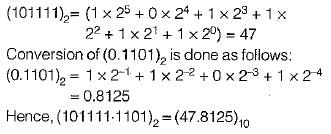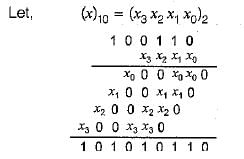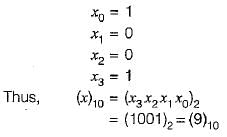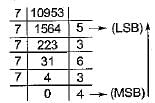Test: Basics of Digital Electronics - 1 - Electronics and Communication Engineering (ECE) MCQ
10 Questions MCQ Test GATE ECE (Electronics) Mock Test Series 2025 - Test: Basics of Digital Electronics - 1
The decimal equivalent of (101111.1101)2 is
Consider the following statements associated with data representation by 1’s and 2‘s complements:
1. The 2’s complement system requires only one arithmetic operation.
2. The 1 ’s complement system requires two arithmetic operations.
3. The 1 's complement is often used in logical manipulations for inversion operation.
4. The 2 ’s complement is used only for arithmetic applications.
Which of the statements given above are correct?
1. The 2’s complement system requires only one arithmetic operation.
2. The 1 ’s complement system requires two arithmetic operations.
3. The 1 's complement is often used in logical manipulations for inversion operation.
4. The 2 ’s complement is used only for arithmetic applications.
| 1 Crore+ students have signed up on EduRev. Have you? Download the App |
Match List-l with List-ll and select the correct answer using the codes given below the lists:
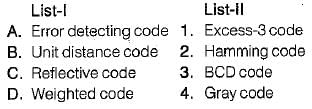



The following two numbers are converted into desired bases x and y respectively.

The values of x and y are respectively
If (100110) x (x)10 = (101010110)2, then the value of x will be equal to
The range of numbers that can be represented using 6-bits in signed binary number representation is
A decimal number (22)10 may be represented by the following ways:
The 7-bit even parity Hamming code of the binary bits 0101 is
If (2AC9)16 = (Z)7, then the value of Z is
Assertion (A): Digital circuits are often called switching circuits.
Reason (R): Each type of digital circuit obeys a certain set of logic rules.
|
25 docs|263 tests
|
|
25 docs|263 tests
|


